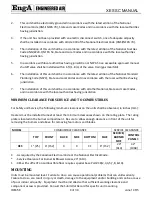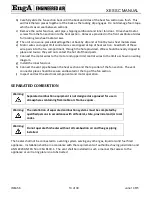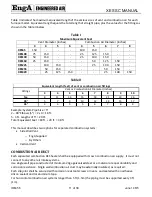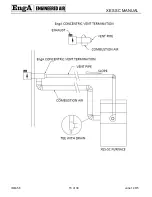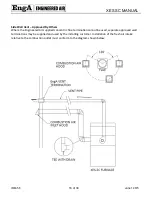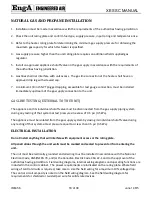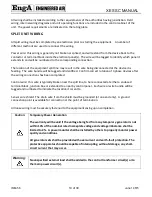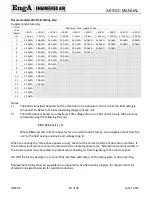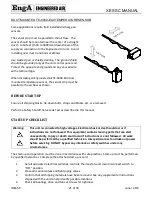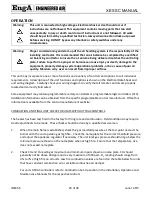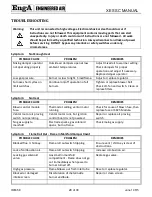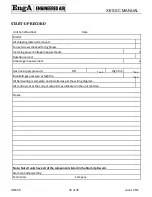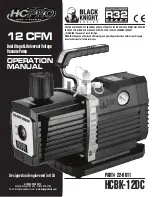
A
XES SC MANUAL
IOM-58
22 of 30
June 14 R5
5
Check drive alignment and belt tension. Refer to Maintenance section.
6
Turn disconnect switch ON (control switch is still off) and check the supply voltage. Voltage
must be within 10% of rating plate. If not, contact the installing electrical contractor and have
the voltage condition corrected before continuing start-up.
7
Check all fan motors for correct rotation. If incorrect, reverse rotation on incoming power only.
8
Set thermostat or controller to the “OFF” position and turn unit control switch “ON”.
9
Check the amperage draw of the motor. Refer to unit or motor rating plate for full load amps.
At the unit, check and record the voltage while it is running. For 3 phase power the phase to
phase voltage imbalance should be less than 2%. A 2% voltage imbalance can cause up to a
10% current imbalance that will overheat motor windings.
To calculate voltage imbalance (NEMA method) refer to the following example:
Phase to phase voltage readings:
235V 236V 230V
The average Voltage between legs is 233.7V (235+236+230)/3
Highest voltage deviation from average is:
233.7V – 230V = 3.7V
Voltage imbalance percentage = Highest deviation divided by average X 100
3.7 / 233.7 x 100 = 1.6% This imbalance is less than 2% and therefore is OK
If voltage imbalance is greater than two percent (2%), turn off main disconnect and contact
the installing electrical contractor to have the voltage condition corrected.
10
Purge all the air from the gas lines. Refer to the Canadian Natural Gas and Propane Installation
Code, C.S.A. Standard B149.1 or the National Fuel Gas Code ANSI/Z223.1/NFPA 54 for proper
method. Check all connections for leaks and correct. Ensure that the inlet pressure agrees with
the approval label.
11
Enable heating; refer to unit function for correct sequence and operation.
12
Confirm field wiring voltage drop is less than 10% when equipment is operating.
13
For the unit to operate properly a system air balance must be performed to ensure correct air
flow. Failure to do so can damage the equipment and/or building and can be a cause of poor
indoor air quality.
14
Damper sections (optional):
i.
Flat mixing dampers:
Both the fresh air and return air dampers are fully open when the dampers are at a
45° angle when fully stroked. This provides optimum mixing of the air streams for
this damper arrangement.
ii.
Angle mixing damper:
Angle mixing section dampers open to an angle of 90° when fully stroked. This
provides optimum mixing of the air streams for this damper arrangement.
15
Set all controls to the settings indicated on the wiring diagram.
16
Re-install all access panels.
17
Remove any packing material or debris and dispose appropriately.

